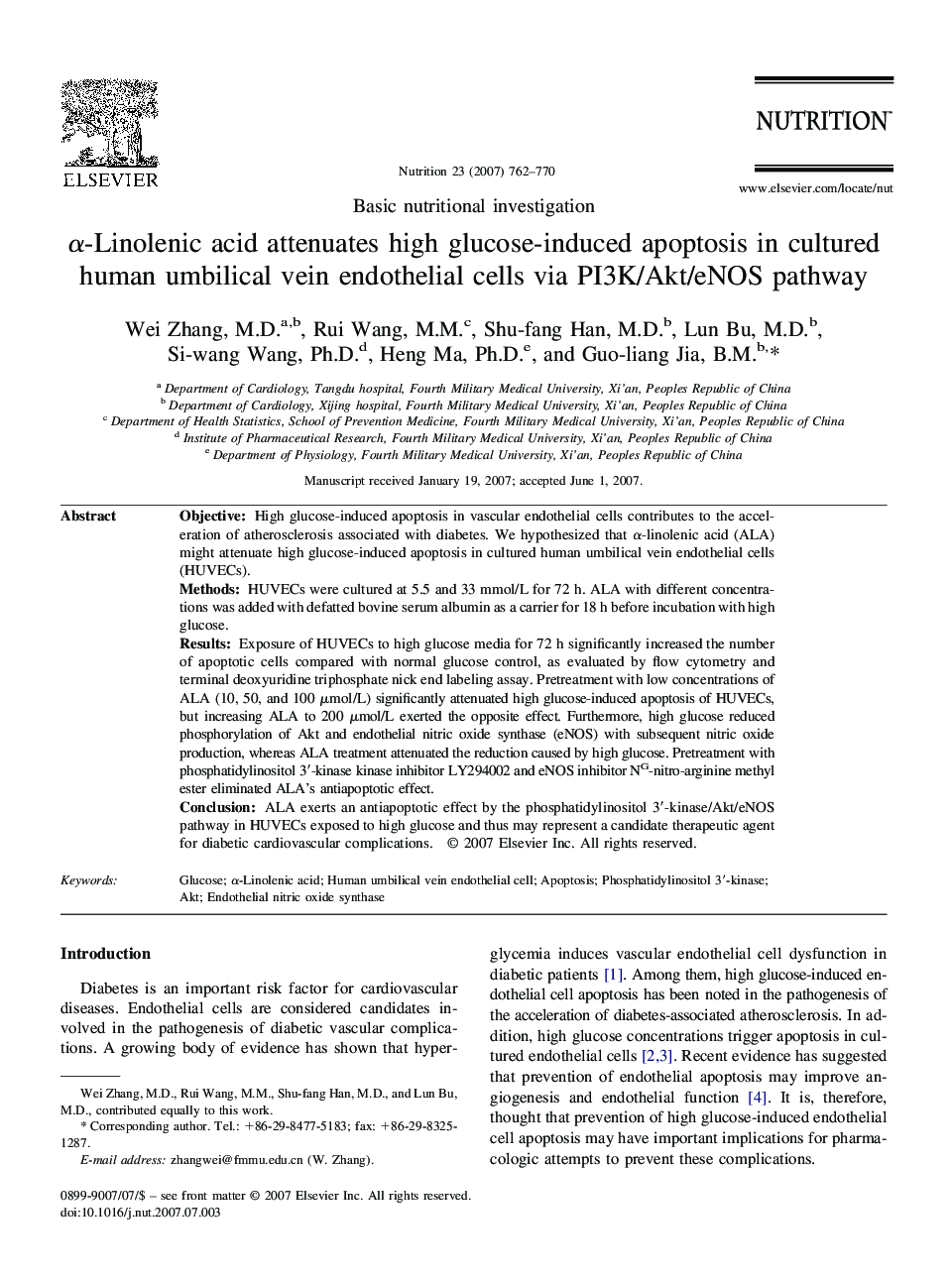| Article ID | Journal | Published Year | Pages | File Type |
|---|---|---|---|---|
| 3277453 | Nutrition | 2007 | 9 Pages |
ObjectiveHigh glucose-induced apoptosis in vascular endothelial cells contributes to the acceleration of atherosclerosis associated with diabetes. We hypothesized that α-linolenic acid (ALA) might attenuate high glucose-induced apoptosis in cultured human umbilical vein endothelial cells (HUVECs).MethodsHUVECs were cultured at 5.5 and 33 mmol/L for 72 h. ALA with different concentrations was added with defatted bovine serum albumin as a carrier for 18 h before incubation with high glucose.ResultsExposure of HUVECs to high glucose media for 72 h significantly increased the number of apoptotic cells compared with normal glucose control, as evaluated by flow cytometry and terminal deoxyuridine triphosphate nick end labeling assay. Pretreatment with low concentrations of ALA (10, 50, and 100 μmol/L) significantly attenuated high glucose-induced apoptosis of HUVECs, but increasing ALA to 200 μmol/L exerted the opposite effect. Furthermore, high glucose reduced phosphorylation of Akt and endothelial nitric oxide synthase (eNOS) with subsequent nitric oxide production, whereas ALA treatment attenuated the reduction caused by high glucose. Pretreatment with phosphatidylinositol 3’ -kinase kinase inhibitor LY294002 and eNOS inhibitor NG -nitro-arginine methyl esyer eliminated ALA’ antiapoptotic effect.ConclusionALA exerts an antiapoptotic effect by the phosphatidylinositol 3’-kinase/Akt/eNOS pathway in HUVECs exposed to high glucose and thus may represent a candidate therapeutic agent for diabetic cardiovascular complications.
